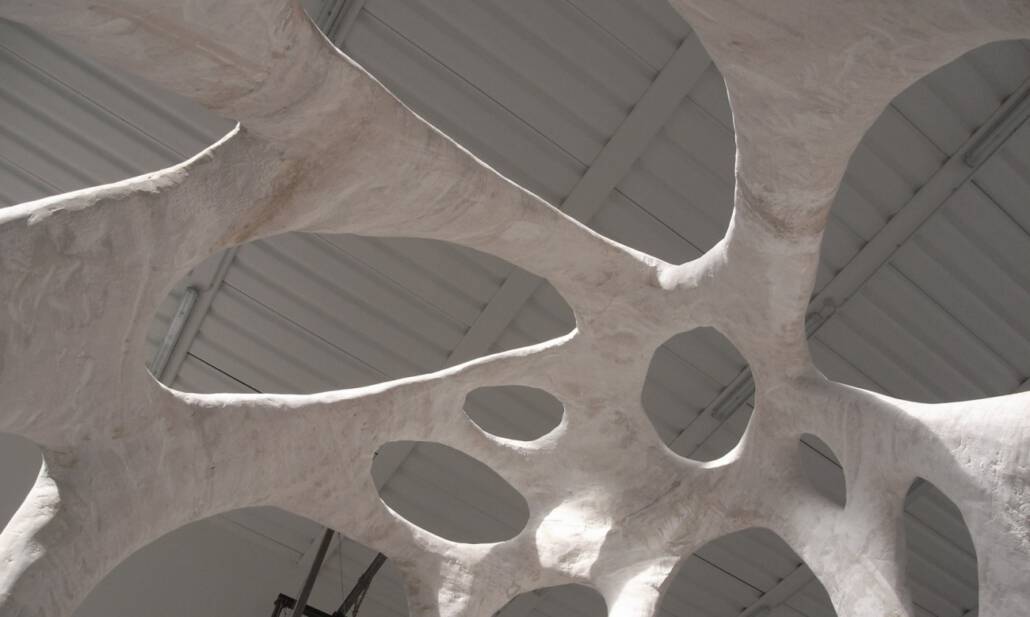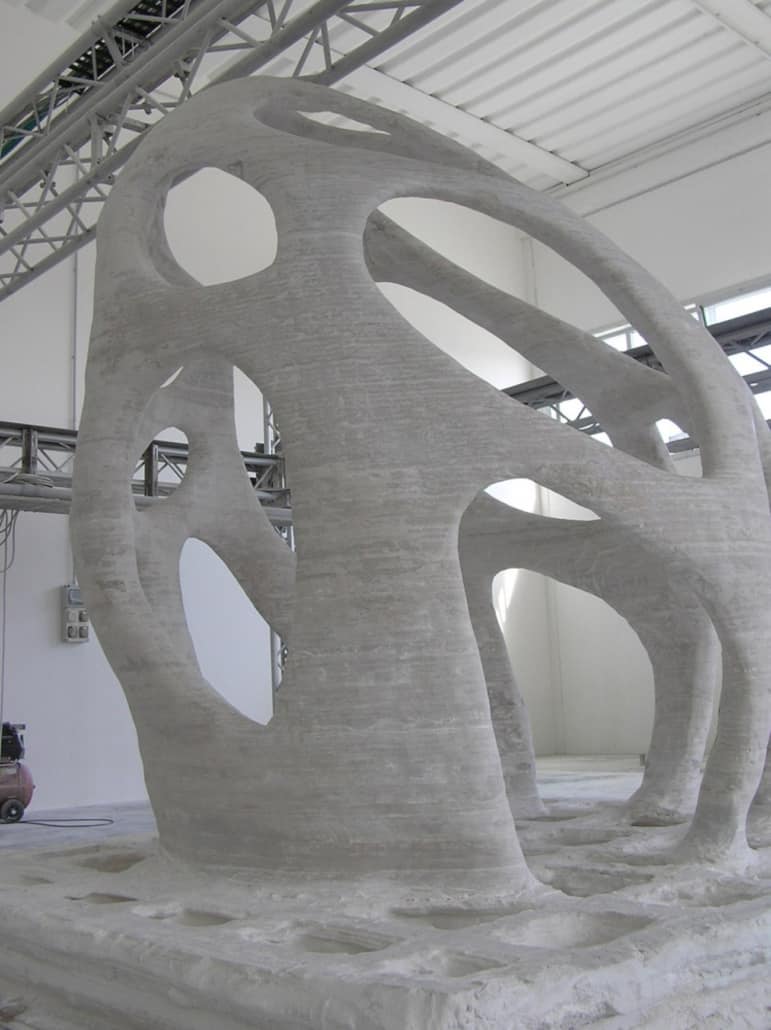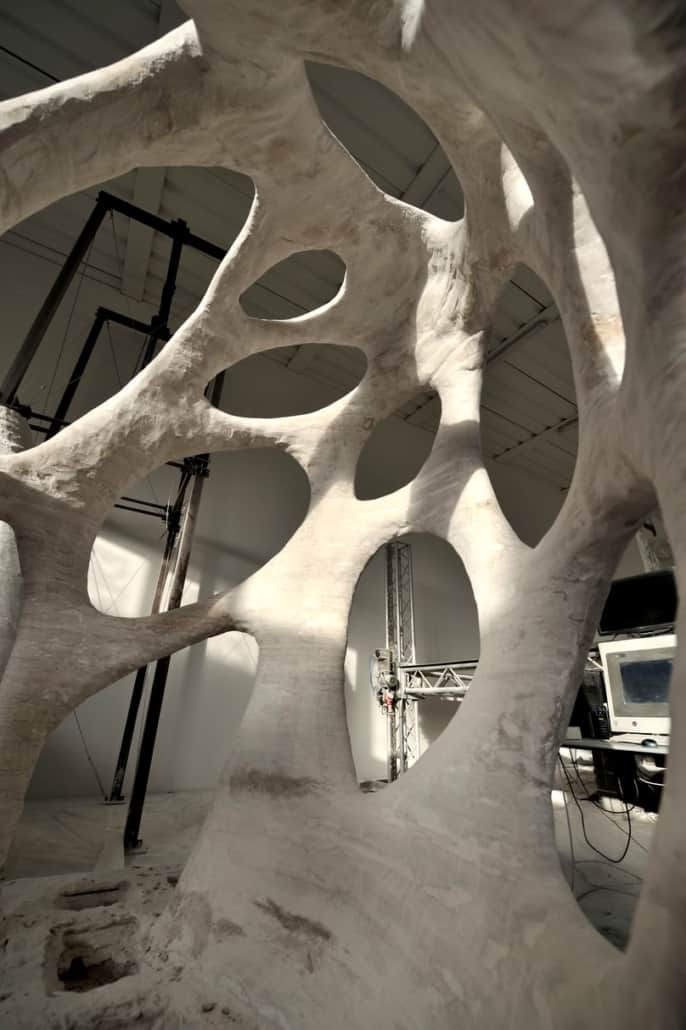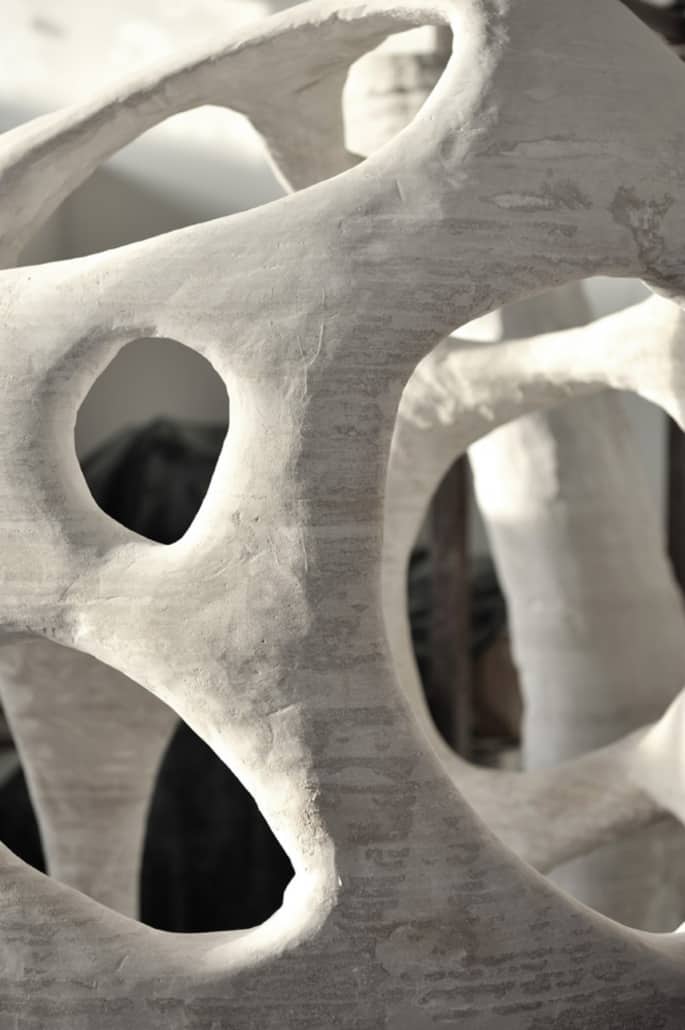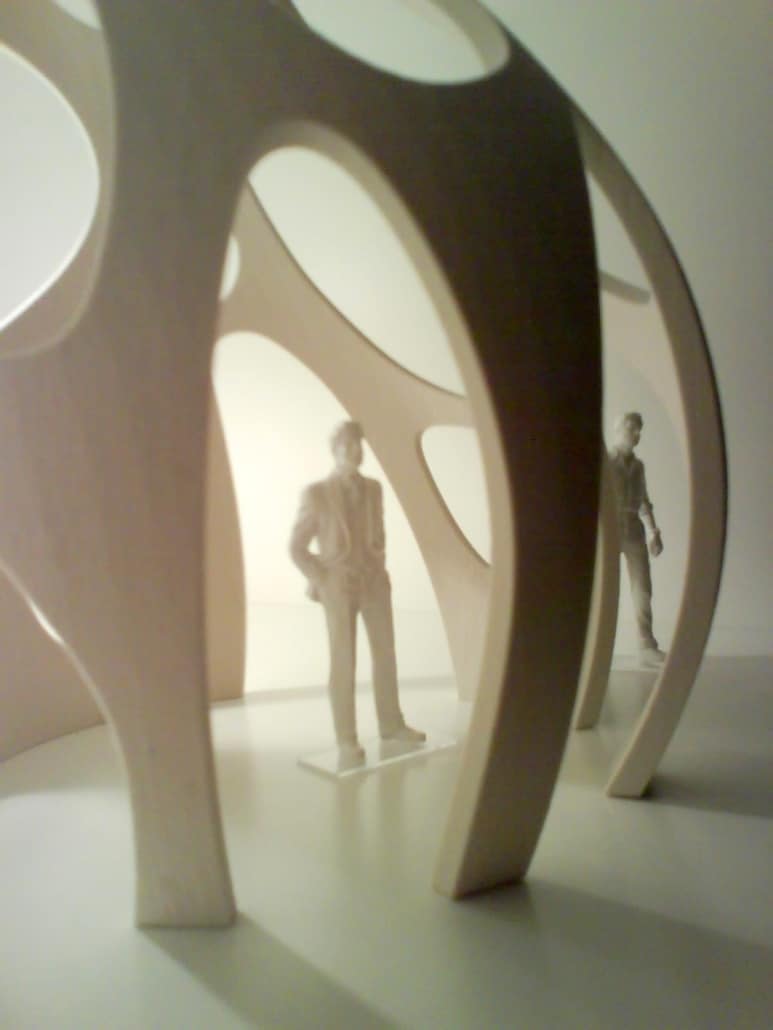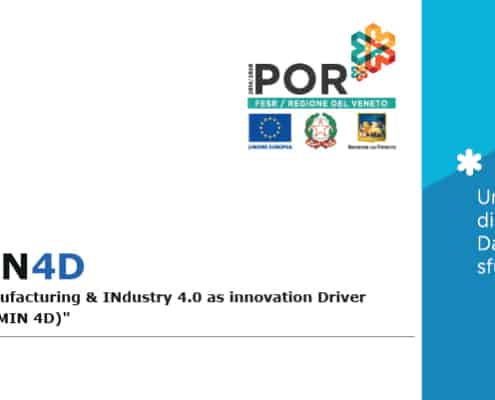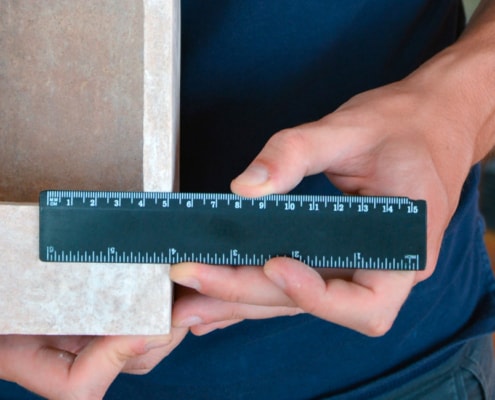HOW TO PRINT IN 3D A STONE PAVILION INSPIRED BY MARINE MICROORGANISMS
We think that using the 3D stone printing technology in the construction industry will simplify the process of realization of every project. Thought and man are now closer. In this article we will show how Shiro Studio‘s Radiolaria is an example: the work appears to everyone as a pavilion printed entirely in 3D, without the aid of reinforcements or molds in the implementation phase. The nozzles of the printer solidified the mineral material layer after layer recreating the stone in three dimensions alternating solid forms with empty spaces for 3 meters.
This seems hard to believe, right?
We think Radiolaria is much more than a free-form pavilion. In fact, for us is also a stimulus to the design of new eco-friendly architectural structures through additive manufacturing, since the components used during printing have no environmental impact, and to the introduction of new spaces “Did you ever think that the structure of a marine microorganism could ever become a pavilion?” We’ll arouse your curiosity even more when the total cost of the materials used will be revealed, but first we would like to point out the but first we would like to point out the performances of the printed stone, the results of the tests are excellent: compared to the structural properties of Portland cement. our printed stone has superior performance in traction and compression. Few already write that the use of stereolithography for the construction of structural elements will lead to an improvement that is comparable in to the transition from typewriters to printers in offices.
The idea is revolutionary for sure …
..but it is not over yet! Thanks to 3D printing and CAD (Computer Aided Design) objects can be scanned through a 3D scan process and there is the possibility to scale them in bigger or smaller. Radiolaria, for example as well as being printed in 3x3x3 meters was scaled in small size, and adding a particular photo luminescent type of finishing it has become a lamp. From microorganism to object of design to large pavilion, as you can see the potential of these technologies combined together is amazing.
Uh, well..where were we?
Right! The total cost of the materials used for the entire project printed in large dimensions (granular and binder) is of approximately 60 pounds!
This structure, without any reinforcement on the inside, can be defined as self-supporting. The purpose of Shiro Studio was to “show how with this mega 3D stone printer you can now use a new construction technique for building complex geometries, drawing inspiration from examples that already exist in nature.” Do you think that the opportunity to be inspired by free forms in these fields can lead to a kind of archi-nature in the future? We think this is just the beginning.
Radiolaria is in fact one of the first stone stereolithography printing projects for architecture and construction; the pavilion consists of a square base which supports the whole work. From this base arise the first curved forms that with different convergence join on the top of the structure, 3 meters higher. This one, of 3 x 3 x 3 meters is an experiment carried out in ten days but an even more impressive will be printed, with its 8 meters in height, length and width.
The exoskeletons of these marine microorganisms are surprisingly regular, and they have a great variety in shapes; their similarity to light structures buildings makes interesting to study their relevance for architecture. There is also an affinity between the delicate process of forming Radiolarians and printing layer by layer with the rhythm of a millimeter per minute. “Make the invisible tangible” is the mission of Shiro Studio in London, well, they did it again even this time.
Perhaps someone is still wondering why we printed a Radiolaria. The answer is simple: skeleton is made of mineral material, and its forms are elegant and free; it is an organism that sums up perfectly two of the ideas that stand behind this project and this project enhances at the same time the great potential of this type of 3D printing.
We think it will not be long before another natural structure will be scaled up into an architectural element. And you? What do you think? We don’t think it’s going to be long…
Published on 17th August 2015


